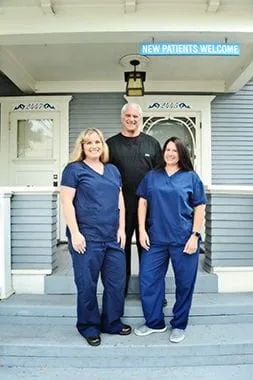
Welcome to our Practice
Thank you for visiting the web site of Dr. Donnelly. Welcome.
Our site provides important information for our own patients as well as prospective patients that are considering joining our practice for their dental treatment.
We’ve designed our website to answers to frequently asked questions. Please feel free to call us anytime. We appreciate this opportunity to introduce ourselves and we look forward to providing you with quality dental care.
We want you to know that in our office you can expect to be treated with respect at all times. We strive to deliver the best diagnosis and treatment that dentistry has to offer. We believe that these goals can be met through a continuous and open dialogue between you and our entire team.
We encourage you to involve yourself in your own treatment and to ask questions throughout our relationship. In our opinion, an informed and involved client is most likely to achieve the highest level of health, and we look forward to working with you to achieve this.
